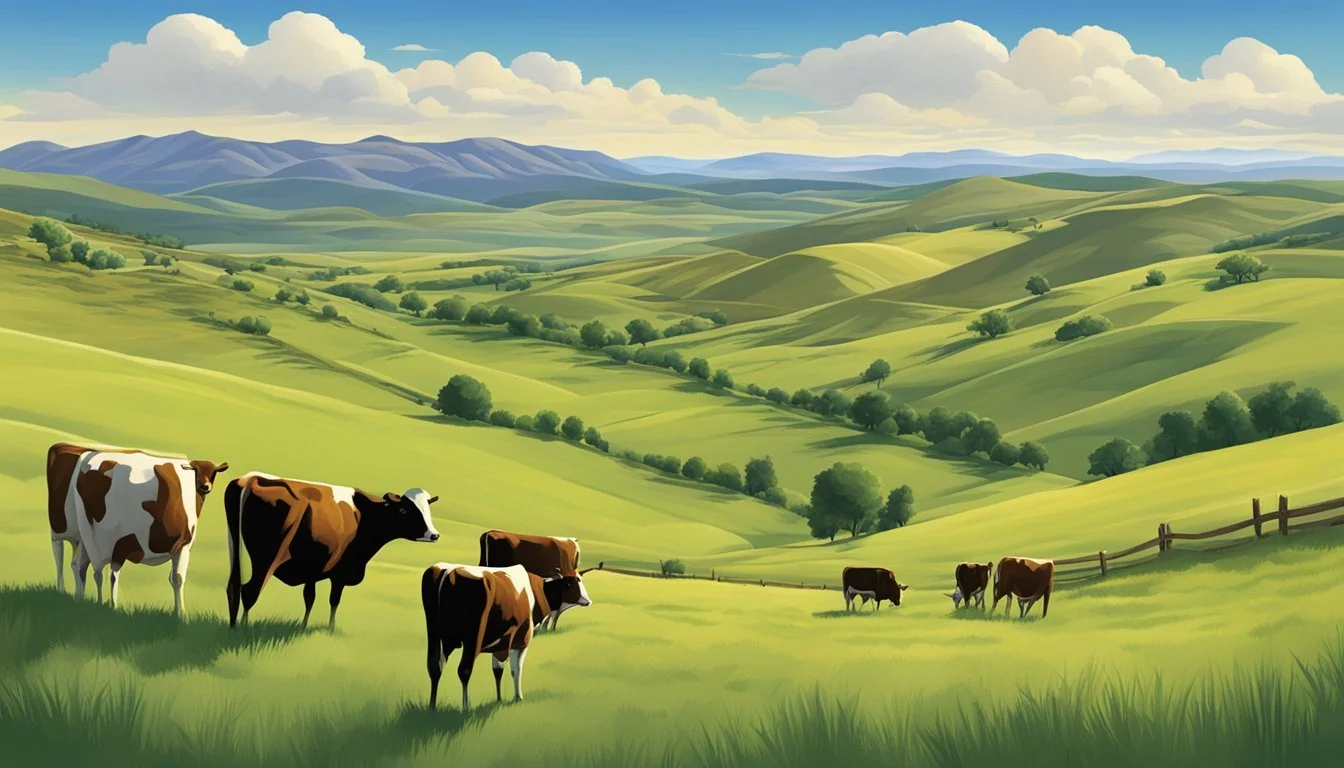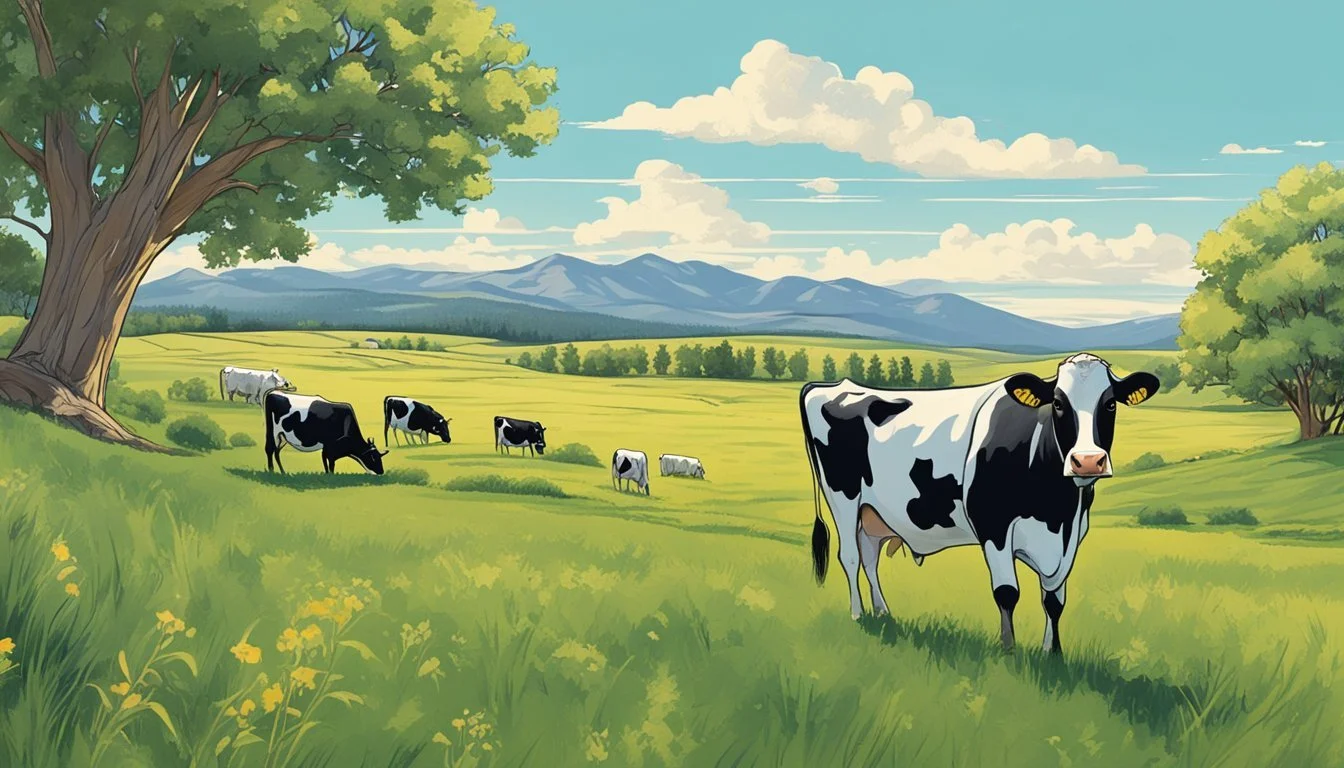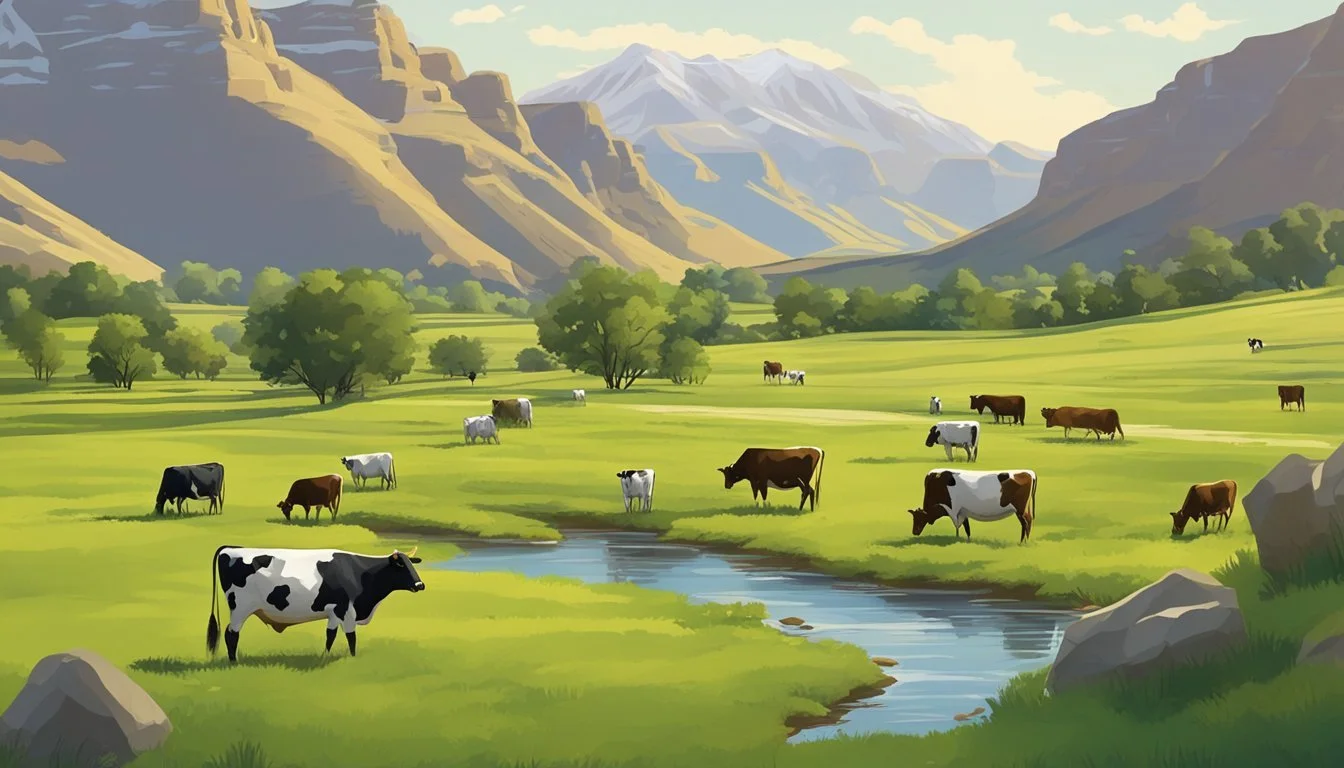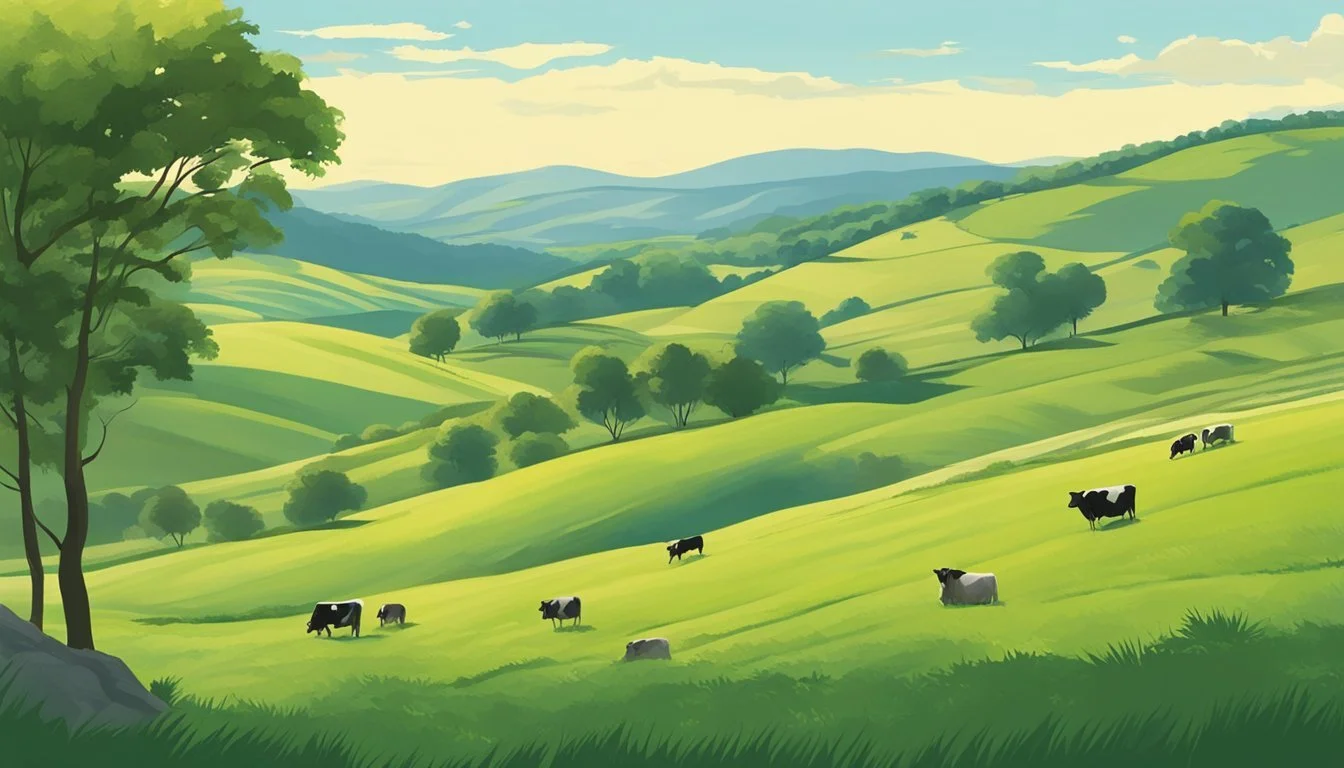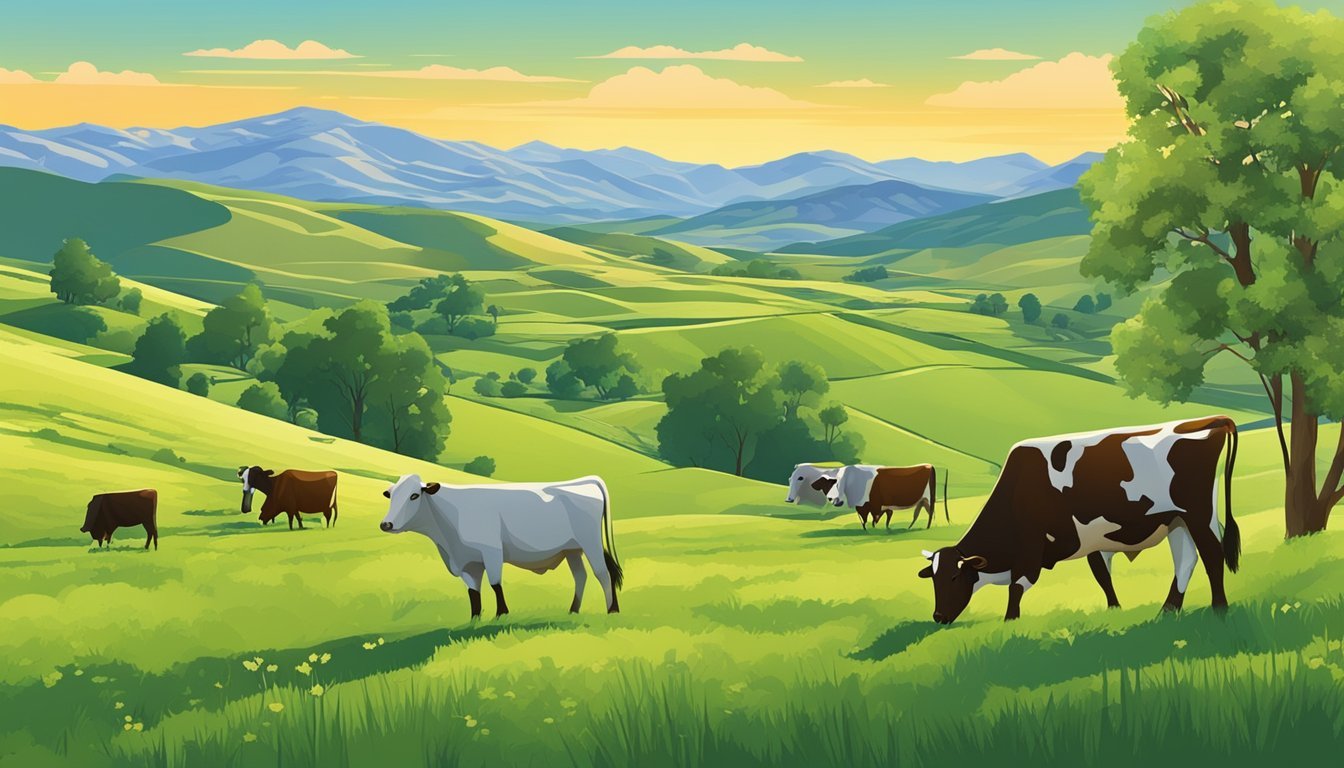Stocking Rate Colorado
Determining Optimal Cattle Per Acre for Your Ranch
Determining the appropriate stocking rate for cattle in Colorado is essential for the health of both the land and the livestock. The number of cows that can be supported per acre varies based on numerous factors, including the productivity of the rangeland, local climate conditions, and the specific needs of the cattle. In regions such as the Eastern Front Range of Colorado, where the ecosystem is generally in fair to good condition with normal precipitation levels, the land's carrying capacity is a vital consideration for sustainable grazing practices.
Stocking rates in Colorado are influenced by the varying forage supply, which can be difficult to predict as it changes annually. Graziers must calculate the annual usable yield, considering that only a portion of the actual forage produced can be sustainably used without damaging the rangeland. This yield is often estimated at around 50% of the total forage growth to ensure the balance between grazing pressure and forage regeneration.
Ranchers can use a simple calculation to determine how many cows their property can support, which involves assessing the number of animal units, the length of the grazing season, and the local stocking rate guidelines. By adhering to these practices and conducting regular assessments, cattle producers in Colorado can maintain the delicate balance between livestock management and rangeland health, helping to ensure a sustainable operation.
Understanding Stocking Rates
Stocking rates are integral for sustainable grazing management, ensuring that a property supports an adequate number of livestock without degrading resources. This section explores key concepts and methods for determining appropriate stocking rates.
Defining Animal Unit and Animal Unit Month
An Animal Unit (AU) is a standard measure equating to one 1,000-pound cow with a calf less than six months old. An Animal Unit Month (AUM) represents the amount of forage required by an AU for one month. These units are critical for understanding and comparing livestock needs across different types and sizes of animals.
Stocking Rate Fundamentals
The stocking rate is the density of livestock on grazing land and is usually expressed as AUs per acre. It must balance livestock demands with forage availability to maintain ecosystem health. Guidelines suggest leaving at least 50% of the forage ungrazed to preserve plant vigor and resilience.
Calculating Stocking Rates
To calculate the stocking rates, one must assess:
Total available forage on the property, often measured in pounds per acre.
Annual forage production variance to anticipate good and bad years.
Animal units for the livestock in question, adjusting for species and size.
A basic formula to estimate the acreage needed per cow can be as simple as: [ \text{(AU requirement per cow) } \times \text{ (number of months grazing) } \div \text{ Stocking Rate} = \text{ Acres needed per cow} ]
Assessing Forage Availability
To determine how many cows per acre a property in Colorado can support, one must accurately assess the forage availability. Forage availability includes both the quantity and quality of accessible forage, the condition of the pasture, and how factors like soil type influence forage production.
Forage Production and Quality
Forage production is quantified by the amount of edible plant material that a pasture can produce annually. In Colorado, this measurement is often expressed in terms of Animal Unit Months (AUMs), where one AUM is the amount of forage required to support one animal unit for one month. Quality of forage, on the other hand, refers to the nutritional value of the plants, which depends on species composition, plant maturity, and time of year. A forage test can provide specifics on protein content, fiber, and energy, allowing for a more precise assessment of nutritional adequacy for cattle.
Pasture Condition and Plant Community
The condition of the pasture also plays a crucial role in determining forage availability. A well-managed pasture, exhibiting minimal signs of overgrazing and erosion, will generally offer more sustenance compared to a poorly maintained one. The plant community within the pasture—comprising grasses, forbs, and shrubs—directly relates to the forage that cattle will consume. Pastures with a diverse and healthy plant community tend to be more resilient and can better withstand grazing pressure.
Soil Type and Impact on Forage
Soil type significantly impacts forage production. Sandy soils may drain quickly but can be low in nutrients, while clay soils hold moisture but may become compacted, restricting root growth. Knowing the soil type helps in understanding the water-holding capacity, fertility, and potential forage yield of the pasture, as different soil types can drastically affect forage quantity and quality. For example, loamy soils—being well-drained and fertile—are generally most conducive to high-quality forage production. Regular soil testing can provide information on nutrient levels and needs, guiding fertilization and amendment practices to optimize forage availability.
Land and Pasture Management
In Colorado, land and pasture management are key to optimizing livestock carrying capacity and ensuring sustainable grazing practices. Through proper utilization and strategic grazing systems, ranchers can enhance forage supply and land health.
Optimizing Pasture Utilization
Optimal pasture utilization maximizes the harvest efficiency of forage without compromising the health of the grassland. Utilization rates can vary, but a common guideline on the Front Range of Colorado suggests that dryland pastures can produce between 200 to 2,000 pounds of forage per acre annually, while irrigated pastures may yield 2,000 to 10,000 pounds per acre. Adjusting livestock density according to forage availability is crucial, as it ensures a consistent feed supply and helps maintain pasture condition.
Avoiding Overgrazing
Overgrazing depletes plant health and reduces the land's ability to support livestock. It is generally advised to consume only about 50% of the total available forage to prevent overuse and allow grass recovery. The Web Soil Survey provides a valuable tool for ranchers to assess soil types and related forage production capacities, aiding in avoiding the detrimental effects of overgrazing.
Implementing Rotational Grazing
Rotational grazing is a grazing system that involves dividing pastures into smaller areas, allowing livestock to graze one section at a time while others recover. This method can significantly improve forage utilization and support more cows per acre by promoting even grazing and reducing the potential for overuse in any single area. By managing the grazing patterns, ranchers can also enhance grassland resilience and maintain a steady forage supply throughout the grazing season.
Cattle Characteristics and Management
In Colorado, cattle management and the determination of stocking rates are heavily influenced by the breed of cattle, their growth characteristics, and their specific management needs.
Different Cattle Breeds and Stocking Rates
Different cattle breeds come with various forage needs, growth rates, and overall contributions to beef production. For example, Angus cattle are known for their efficiency in weight gain but may require ample pasture to sustain this growth. In contrast, smaller breeds such as the Dexter may have lower forage needs per animal, directly affecting stocking rates.
Angus: Higher weight gain, requires more forage per acre.
Dexter: Lower weight gain, can be supported by less forage per acre.
Weight Gain and Forage Consumption
Weight gain in cattle correlates with forage consumption. More forage consumption typically equates to greater weight gain and directly impacts beef production. Cattle production in Colorado must balance the forage availability against the desired weight gain, ensuring that the pasture can sustain the cattle throughout the grazing period without overgrazing.
For example:
High weight gain goals may necessitate more forage per animal, reducing stocking rates.
Moderate weight gain goals could lead to more balanced stocking rates.
Managing Bulls and Replacement Heifers
Management strategies differ for bulls and replacement heifers relative to the general cattle population. Bulls, typically heavier and more dominant, may affect forage consumption rates and pasture dynamics. Replacement heifers, being younger and lighter, often require careful monitoring for weight gain to ensure they meet cattle production milestones.
Bulls: Require strategic placement within pasture to manage forage consumption.
Replacement Heifers: Need consistent weight monitoring to support optimal growth patterns.
Grazing Dynamics and Strategies
Grazing management in Colorado requires a balance between livestock needs and the forage available. Careful planning supports sustainable livestock production while maintaining rangeland health.
Determining Grazing Season Length
Colorado's grazing season length is influenced by variable climate conditions, which directly affect forage growth cycles. Grazing season can extend up to five months, with data indicating a sustainable stocking rate of 0.31 animal unit months (AUM) per acre. Adjustments to the season length must mirror annual changes in forage supply to prevent overgrazing.
Calculating Forage Demand and Supply
To calculate forage demand, consider that the average daily forage intake for a grazing animal is approximately 2.6% of their body weight. The forage supply can fluctuate year to year, especially in areas like Colorado. For instance, unirrigated rangelands in the Sierra Foothills may require 15-18 acres to support one cow annually, whereas irrigated pastures typically produce enough forage on one acre for a six-month grazing season.
Forage Type Acre(s) Required per Cow per Year Unirrigated 15-18 acres Irrigated 1 acre (6-month season)
Adapting Grazing Strategies to Seasonal Changes
Implementing the right grazing strategy involves adjusting grazing pressure and utilization rates to match seasonal variations in forage availability. Strategies can range from rotation to continuous grazing. The goal is to ensure that the grazing area supports the grazing animals without depleting resources, which requires flexibility and a clear understanding of forage dynamics.
Climate and Environmental Factors
In Colorado, the number of cows per acre a property can support is strongly influenced by the interplay of climate and environmental factors. These elements affect pasture yield, pasture management, and the health of rangelands.
Effect of Climate on Pasture Yield
Climate plays a critical role in determining pasture productivity. In Colorado, the semi-arid climate means that precipitation is a limiting factor for forage growth. Depending on the location within the state, the average annual precipitation can vary significantly, which consequently impacts pasture yield. For example, the eastern plains may receive more rain compared to the arid western slope, leading to spatial variations in forage availability.
Managing Pastures in Varied Topography
Colorado's diverse topography presents challenges for pasture management. In regions with steep gradients or uneven terrain, the impact on forage growth can be pronounced, as soil erosion and water runoff may deplete soil nutrients and moisture. Producers must account for these variations and possibly implement soil conservation practices or water management techniques to maintain a sustainable stocking rate.
Rangeland Considerations
The condition of rangelands is a major consideration. Rangelands in Colorado are influenced by factors such as soil type, precipitation patterns, and plant species composition. They are critical for supporting livestock, but overgrazing can lead to degradation. An understanding of the site-specific carrying capacity, which is the maximum number of livestock the land can support without causing environmental damage, is essential for sustainable management practices.
Monitoring and Adjusting Stocking Rates
Determining how many cows an acre can support on a property in Colorado requires careful monitoring and periodic adjustments to stocking rates. This ensures that the carrying capacity of the pasture is not exceeded, maintaining both forage and animal health.
Utilizing Technology and Data
Technology Solutions: Ranchers can leverage applications like the Carrying Capacity App to simulate various scenarios for forage production, which aids in estimating proper stocking rates for different conditions.
Data Utilization: Data from the Natural Resources Conservation Service (NRCS) contributes to informed decisions regarding pasture management, providing valuable information on soil conditions and vegetation types. Regular analysis of this data helps adjust stocking rates with precision.
Regular Monitoring and Pasture Assessment
Pasture Monitoring: It's critical to conduct consistent assessments of the pasture's forage supply. Observations should include grass health, growth rate, and signs of overgrazing.
NRCS Guidelines: Following NRCS guidelines, which recommend effective tools such as range monitoring with photo points, can help with visual assessment and tracking changes over time.
Adjustment Strategies for Optimal Carrying Capacity
Proactive Adjustments: When deviations from expected forage production occur, ranchers must proactively adjust the number of animals per acre to avoid degradation of the pasture.
Long-Term Trends: Consideration of long-term trends in plant community changes and livestock genetics can influence stocking rate adjustments, ensuring sustainability of the grassland resources.
Economic Considerations
In determining the stocking rate for a property in Colorado, ranchers must account for economic factors that influence profitability and operational decisions. Understanding costs and the economic impact of grazing management is essential for sustainable ranch operations.
Analyzing Profitability and Costs
The profitability of a ranching operation in Colorado hinges on efficient resource management and minimization of costs. Key financial considerations include:
Variable costs: Food supplements, veterinary services, and labor.
Fixed costs: Mortgage payments or land taxes.
Break-even analysis: Determines how many cows per acre are necessary to cover both fixed and variable costs.
Profitability also relates to market conditions, which can affect cattle prices and demand for beef.
Economic Impact of Grazing Management
Grazing management directly affects the ranch's bottom line. The following are crucial aspects:
Feed Efficiency: Utilizing optimal stocking rates to maximize forage use without degrading the land.
Pasture Recovery: Implementing rest-rotation schedules to ensure long-term forage productivity.
Long-Term Sustainable Stocking Rate: According to a study encompassing data till 2018, the long-term sustainable stocking rate in Eastern Colorado was estimated at 0.31 Animal Unit Months (AUM) per acre.
Sound grazing strategies can reduce costs and increase the productive lifespan of pastures, contributing positively to economic sustainability.
Decision Making for Ranchers
Ranchers face complex choices to balance economic success with agricultural stewardship. They must:
Calculate the carrying capacity: Understanding the land's capacity ensures that the stocking rate aligns with the forage availability, which directly influences cost and productivity.
Consider agricultural statistics: For instance, examining values such as the average cash rent per acre for different types of land aids in financial planning.
Adapt to environmental variability: Drought or harsh winters require flexible stocking decisions to maintain economic viability.
Making informed decisions based on these factors enables ranchers to optimize their economic returns while maintaining the health of their land and livestock.
Legal and Regulatory Requirements
In Colorado, the ability to support cattle on a property is subject to a framework of legal and regulatory requirements. Landowners must be mindful of ranch land regulations, environmental laws, water rights, and grazing permits to ensure compliance and sustainability.
Understanding Ranch Land Regulations
In Colorado, ranch land regulations are critical to maintaining the balance between agricultural practices and conservation efforts. Colorado State University Extension provides guidelines and support for local landowners to navigate these rules. These regulations dictate acceptable practices that influence how many cattle a property can support, often considering the land's ecological sustainability.
Compliance with Environmental Laws
Landowners must comply with federal and state environmental laws, aiming to protect habitats, soil quality, and water resources. The Clean Water Act and the Endangered Species Act are examples of federal regulations that may dictate land use. Additionally, Colorado has its specific environmental regulations that must be observed to avoid penalties and ensure that agricultural activities do not negatively impact the surrounding ecosystem.
Water Rights and Grazing Permits
Water Rights: In Colorado, water rights are a critical component of ranch operations. Laws are based on a prior appropriation system ('first in time, first in right'), and any use of water for livestock requires a legal entitlement. This could significantly impact the number of animals a property can support.
Grazing Permits: Grazing permits issued by government agencies (like the Bureau of Land Management or the U.S. Forest Service) are necessary when using public lands for grazing. These permits will have stipulations that can affect stocking rates, including acreage allowed and the duration of grazing periods.

